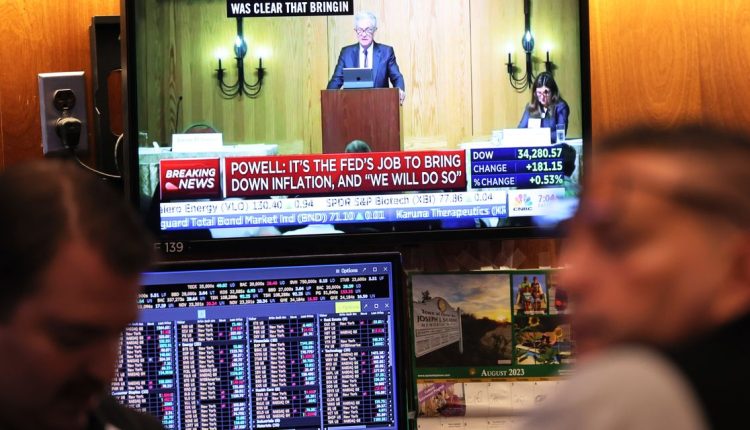“If things go well the first time, might as well try it again” might be Federal Reserve Chair Jerome Powell’s mantra as he prepares for next week’s policy meeting, economists say.
Powell’s speech at the central bank’s annual summit in Jackson Hole, Wyo., last month seemed to satisfy both hawks and doves, with a combination of anti-inflation rhetoric and dovish details that revealed no concrete plans to raise interest rates again.
“The Jackson Hole speech was a genius stroke of messaging, because everyone heard what they wanted to from it,” Bill Adams, chief economist at Comerica Bank in Dallas, said in an interview.
He predicted that Powell, echoing that speech, will emphasize that the Fed is resolved to get inflation back to its 2% target, and that the central bank is firm in its belief that interest rates will remain at high levels for an extended period.
Read: 4 things to watch for at next week’s Fed policy meeting
Powell’s cautious approach has been echoed by other Fed officials.
Fed governor Christopher Waller told CNBC that “there is nothing that is saying we need to do anything imminent, anytime soon, so we can just sit there [and] and wait for the data.”
In an interview with MarketWatch, Boston Federal Reserve Bank President Susan Collins said the central bank had earned the right to take its time with interest-rate decisions.
The Fed can also be patient because the trend in inflation is moving in the right direction, Yelena Shulyatyeva, senior U.S. economist for BNP Paribas, said in an interview.
Even if the August consumer-inflation report wasn’t as benign as the June and July reports, “we’re seeing the level of inflation has downshifted,” she said.
At the same time, the labor market has held firm, with some very incremental signs of softening. A year ago, many economists said lowering inflation without a big jump in unemployment was not possible.
What will the Fed do next week?
Economists see the Fed holding rates steady when their meeting ends Wednesday, after having raised the policy rate 25 basis points to a range of 5.25%-5.5% at its last meeting in July.
The central bank is likely to suggest that it may hike rates by 25 basis points at one of its two remaining meetings this year, but make no commitment to do so.
Even if the Fed’s dot-plot forecast continues to show one more hike this year, the Fed “will not exercise the option to hike again unless progress on inflation and the labor market stalls out amid stronger growth,” said Krishna Guha, vice chair of Evercore ISI.
Many economists, including Michael Hanson, senior global economist at JPMorgan, think the Fed is done hiking altogether. Others think the central bank will follow through with one more hike before stopping, while only a few think it might have to do even more.
That debate will continue until the following Fed meeting, scheduled for Oct. 31-Nov. 1.
Read the full article here

